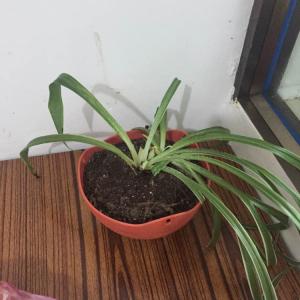文章
Colour_
2017年07月11日
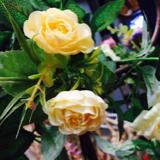
忽地笑(学名:Lycoris aurea (L'Hér.) Herb)草本,地生。鳞茎卵形;叶剑形;伞形花序,有花4-8朵,花黄色;花被裂片背面具淡绿色中肋,雄蕊略伸出于花被外,花丝黄色;蒴果具三棱,室背开裂;种子少数,近球形。
分布中国福建、台湾、湖北、湖南、广东、广西、四川、云南等地,多长于阴湿山坡地。

忽地笑养殖方法
土壤
忽地笑的适应性很强,喜欢在阴湿的环境中生长,比较耐寒、耐盐碱,最好选择含有丰富腐殖质的肥沃沙壤土或者石灰质壤土。
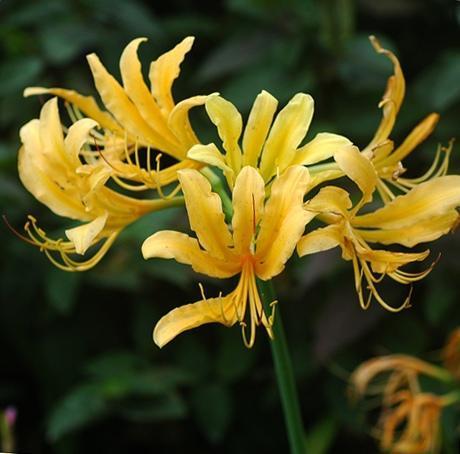
光照
忽地笑不耐旱,怕水涝和阳光暴晒,光照过强时会导致植株不开花,最适合的生长温度为22-30度,平时种植时放置在散光通风处即可。
浇水
忽地笑的日常管理要注意保持土壤湿润,在夏季开花前要是遇到比较干旱的天气,需要连续浇两到三次的水;在植株的休眠期时,要逐步减少浇水的量。
施肥
忽地笑的生长不需要过多的施肥,可以施用一些速效性的化学肥料,用来促进叶片营养生长。在三月到四月期间可以施用少量追肥,可以促进鳞茎的增大;在六月到七月植株的休眠期时,可以施加少量的有机肥;当花茎开始抽出时,可以追施一次稀薄的腐熟磷钾肥。
分布中国福建、台湾、湖北、湖南、广东、广西、四川、云南等地,多长于阴湿山坡地。

忽地笑养殖方法
土壤
忽地笑的适应性很强,喜欢在阴湿的环境中生长,比较耐寒、耐盐碱,最好选择含有丰富腐殖质的肥沃沙壤土或者石灰质壤土。

光照
忽地笑不耐旱,怕水涝和阳光暴晒,光照过强时会导致植株不开花,最适合的生长温度为22-30度,平时种植时放置在散光通风处即可。
浇水
忽地笑的日常管理要注意保持土壤湿润,在夏季开花前要是遇到比较干旱的天气,需要连续浇两到三次的水;在植株的休眠期时,要逐步减少浇水的量。
施肥
忽地笑的生长不需要过多的施肥,可以施用一些速效性的化学肥料,用来促进叶片营养生长。在三月到四月期间可以施用少量追肥,可以促进鳞茎的增大;在六月到七月植株的休眠期时,可以施加少量的有机肥;当花茎开始抽出时,可以追施一次稀薄的腐熟磷钾肥。
0
0
文章
Dummer. ゛☀
2017年07月11日

Family - Rubiaceae
Stems - Multiple from the base, branching, herbaceous, 4-angled, to +/-40cm long, ascending to erect or reclining, glabrous to sparse retrorse strigose, with bumps and the angles, from a small crown and fibrous roots.
Leaves - Whorled, 4 at a node, sessile, linear-lanceolate, to +/-4cm long, +5mm broad, with three main nerves, entire, with ciliate margins, glabrous above, sparsely pubescent below, green above, light green below. Veins of leaf impressed above, expressed below.
Inflorescence - Terminal cymes to +10cm long and broad. Each division of the cyme subtended by a pair of elliptic bracts. Bracts reduced upward, with retrorse hairs at the base. Pedicels and peduncles of cyme glabrous, 4-angled, often with hairs in their axils. Pedicels to 4mm long.
Flowers - Corolla white, 4-lobed, +/-3mm broad. Corolla tube conic, -1mm long. Lobes acute, glabrous, +1mm long and broad, ovate-oblong, entire. Stamens 4, alternating with the corolla lobes, adnate at the apex of the corolla tube, erect, exserted. Filaments to .7mm long, white, glabrous. Anthers yellow-brown, .2-.3mm long. Style 1, glabrous, white, slightly exserted, bifurcate in the apical 1/2, +1mm long. Stigmas capitate, translucent, .1-.2mm broad. Ovary inferior, light green, with antrorse hairs, bilobed, .7mm long in flower, .8mm broad.
Flowering - May - July.
Habitat - North-facing ledges and crevices of limestone bluffs.
Origin - Native to U.S.
Other info. - This species is extremely rare in Missouri and can only be found in two counties in the state. The plant is a relic from before the retreat of the Pleistocene ice sheets. It has remained only in the cool, north-facing bluffs along the Jack's Fork River.
In Missouri G. borealis doesn't take the erect form that it is capable of. Plants in this state hang from the rock crevices from which they grow and look like this.
Stems - Multiple from the base, branching, herbaceous, 4-angled, to +/-40cm long, ascending to erect or reclining, glabrous to sparse retrorse strigose, with bumps and the angles, from a small crown and fibrous roots.

Leaves - Whorled, 4 at a node, sessile, linear-lanceolate, to +/-4cm long, +5mm broad, with three main nerves, entire, with ciliate margins, glabrous above, sparsely pubescent below, green above, light green below. Veins of leaf impressed above, expressed below.

Inflorescence - Terminal cymes to +10cm long and broad. Each division of the cyme subtended by a pair of elliptic bracts. Bracts reduced upward, with retrorse hairs at the base. Pedicels and peduncles of cyme glabrous, 4-angled, often with hairs in their axils. Pedicels to 4mm long.
Flowers - Corolla white, 4-lobed, +/-3mm broad. Corolla tube conic, -1mm long. Lobes acute, glabrous, +1mm long and broad, ovate-oblong, entire. Stamens 4, alternating with the corolla lobes, adnate at the apex of the corolla tube, erect, exserted. Filaments to .7mm long, white, glabrous. Anthers yellow-brown, .2-.3mm long. Style 1, glabrous, white, slightly exserted, bifurcate in the apical 1/2, +1mm long. Stigmas capitate, translucent, .1-.2mm broad. Ovary inferior, light green, with antrorse hairs, bilobed, .7mm long in flower, .8mm broad.
Flowering - May - July.
Habitat - North-facing ledges and crevices of limestone bluffs.
Origin - Native to U.S.
Other info. - This species is extremely rare in Missouri and can only be found in two counties in the state. The plant is a relic from before the retreat of the Pleistocene ice sheets. It has remained only in the cool, north-facing bluffs along the Jack's Fork River.
In Missouri G. borealis doesn't take the erect form that it is capable of. Plants in this state hang from the rock crevices from which they grow and look like this.
0
0
文章
Dummer. ゛☀
2017年07月11日

Family - Rubiaceae
Stems - Reclining to ascending, to +/-1.5m long, 4-angled, with retrorse prickles on margins of angles, hollow, multiple from base, branching, herbaceous.

Leaves - In whorls of typically 8, sessile, linear-oblanceolate, mucronate to cuspidate, scabrous, to +7cm long, -1cm broad, with retrorse strigillose to retrorse prickle margins, midrib with prickles below.
Inflorescence - Axillary 2 to 5-flowered pedunculate cymes. Pedicels elongating in fruit, glabrous to scabrous.
Flowers - Corolla white, 4-lobed, tiny, to 3mm broad. Corolla tube to .5mm long. Lobes acute, 1.2mm long and broad, glabrous. Stamens 4, included, alternating with lobes. Styles 2, included, pale yellow. Stigmas capitate, pale-yellow. Ovary 2-carpellate. Calyx globose, hispid, 2mm in diameter. Fruit biglobose, uncinate-hispid, to +/-5mm in diameter, each carpel one seeded.
Flowering - May - July.
Habitat - Thickets, valleys, waste ground, disturbed sites, roadsides, railroads.
Origin - Native to U.S. and Eurasia.
Other info. - Just about everyone has encountered this plant at one time or another. The hooked spines of the fruit hold onto just about anything and are tough to remove. Apparently the fruits are good for something though. If dried and roasted they make a good drink, much like coffee. I haven't tried it yet. The plant itself isn't attractive as the branches grow in a tangled mass low to the ground. The plant is common throughout Missouri.
Stems - Reclining to ascending, to +/-1.5m long, 4-angled, with retrorse prickles on margins of angles, hollow, multiple from base, branching, herbaceous.

Leaves - In whorls of typically 8, sessile, linear-oblanceolate, mucronate to cuspidate, scabrous, to +7cm long, -1cm broad, with retrorse strigillose to retrorse prickle margins, midrib with prickles below.

Inflorescence - Axillary 2 to 5-flowered pedunculate cymes. Pedicels elongating in fruit, glabrous to scabrous.
Flowers - Corolla white, 4-lobed, tiny, to 3mm broad. Corolla tube to .5mm long. Lobes acute, 1.2mm long and broad, glabrous. Stamens 4, included, alternating with lobes. Styles 2, included, pale yellow. Stigmas capitate, pale-yellow. Ovary 2-carpellate. Calyx globose, hispid, 2mm in diameter. Fruit biglobose, uncinate-hispid, to +/-5mm in diameter, each carpel one seeded.
Flowering - May - July.
Habitat - Thickets, valleys, waste ground, disturbed sites, roadsides, railroads.
Origin - Native to U.S. and Eurasia.
Other info. - Just about everyone has encountered this plant at one time or another. The hooked spines of the fruit hold onto just about anything and are tough to remove. Apparently the fruits are good for something though. If dried and roasted they make a good drink, much like coffee. I haven't tried it yet. The plant itself isn't attractive as the branches grow in a tangled mass low to the ground. The plant is common throughout Missouri.
1
0
文章
Dummer. ゛☀
2017年07月11日

Family - Rubiaceae
Stems - Reclining to ascending, to +/-1.5m long, 4-angled, with retrorse prickles on margins of angles, hollow, multiple from base, branching, herbaceous.

Leaves - In whorls of typically 8, sessile, linear-oblanceolate, mucronate to cuspidate, scabrous, to +7cm long, -1cm broad, with retrorse strigillose to retrorse prickle margins, midrib with prickles below.
Inflorescence - Axillary 2 to 5-flowered pedunculate cymes. Pedicels elongating in fruit, glabrous to scabrous.
Flowers - Corolla white, 4-lobed, tiny, to 3mm broad. Corolla tube to .5mm long. Lobes acute, 1.2mm long and broad, glabrous. Stamens 4, included, alternating with lobes. Styles 2, included, pale yellow. Stigmas capitate, pale-yellow. Ovary 2-carpellate. Calyx globose, hispid, 2mm in diameter. Fruit biglobose, uncinate-hispid, to +/-5mm in diameter, each carpel one seeded.
Flowering - May - July.
Habitat - Thickets, valleys, waste ground, disturbed sites, roadsides, railroads.
Origin - Native to U.S. and Eurasia.
Other info. - Just about everyone has encountered this plant at one time or another. The hooked spines of the fruit hold onto just about anything and are tough to remove. Apparently the fruits are good for something though. If dried and roasted they make a good drink, much like coffee. I haven't tried it yet. The plant itself isn't attractive as the branches grow in a tangled mass low to the ground. The plant is common throughout Missouri.
Stems - Reclining to ascending, to +/-1.5m long, 4-angled, with retrorse prickles on margins of angles, hollow, multiple from base, branching, herbaceous.

Leaves - In whorls of typically 8, sessile, linear-oblanceolate, mucronate to cuspidate, scabrous, to +7cm long, -1cm broad, with retrorse strigillose to retrorse prickle margins, midrib with prickles below.

Inflorescence - Axillary 2 to 5-flowered pedunculate cymes. Pedicels elongating in fruit, glabrous to scabrous.
Flowers - Corolla white, 4-lobed, tiny, to 3mm broad. Corolla tube to .5mm long. Lobes acute, 1.2mm long and broad, glabrous. Stamens 4, included, alternating with lobes. Styles 2, included, pale yellow. Stigmas capitate, pale-yellow. Ovary 2-carpellate. Calyx globose, hispid, 2mm in diameter. Fruit biglobose, uncinate-hispid, to +/-5mm in diameter, each carpel one seeded.
Flowering - May - July.
Habitat - Thickets, valleys, waste ground, disturbed sites, roadsides, railroads.
Origin - Native to U.S. and Eurasia.
Other info. - Just about everyone has encountered this plant at one time or another. The hooked spines of the fruit hold onto just about anything and are tough to remove. Apparently the fruits are good for something though. If dried and roasted they make a good drink, much like coffee. I haven't tried it yet. The plant itself isn't attractive as the branches grow in a tangled mass low to the ground. The plant is common throughout Missouri.
0
0
文章
Dummer. ゛☀
2017年07月11日

Family - Onagraceae
Stems - To +1m tall, erect, herbaceous, terete to 4-angled with rounded angles, sub-hollow, glabrous or with thin vertical lines of antrorse curled hairs, single from the base, widely branching in apical half, often reddish at nodes.
Leaves - Stem leaves opposite, short-petiolate. Petioles to 1cm long, with a few strigose hairs on the margins. Blades glabrous, lanceolate, serrate, with antrorse strigose hairs on the margins. Midrib and lateral veins impressed adaxially, expressed abaxially, to +/-10cm long, 2cm broad, typically rounded at the base.
Inflorescence - Terminal bracteate panicles. Bracts foliaceous, reduced upward. Branches of inflorescence alternate, straight and antrorse-curled pubescent. Pedicels pubescent like the branches of inflorescence, to 3-4mm long in flower, elongating in fruit to 1cm long.
Flowers - Petals 4, white to pinkish, 3-5mm long, 2-3mm broad, glabrous, 2-lobed at apex, obovate to elliptic, distinct. Stamens 8, 4 being longer than the others, alternating with the petals, erect. Filaments to 2mm long, white, glabrous. Anthers pink, .2-.3mm in diameter. Stigma capitate, 1mm long, pale yellow. Style 1.5mm long, thicker than the filaments, glabrous. Calyx 4-lobed. Calyx tube to 1mm long. Lobes to 2-3mm long, 1-1.5mm broad, acute to acuminate or apiculate, entire, pubescent (curled and straight) externally, glabrous internally. Calyx tube with a few hairs internally. Ovary inferior, 6-13mm long in flower, antrorse and straight pubescent, 1mm broad, 4-angled (the angles rounded). Ovules many. Fruits to 6cm long, 1.3mm broad. Seeds to 2mm long, .5mm broad, brown, comose. The hairs to 1cm long, whitish brown to cinnamon.
Flowering - July - October.
Habitat - Wet ground.
Origin - Native to U.S.
Other info. - This species is common and can be found throughout Missouri. The plant is fairly easy to ID because of its habitat, opposite stem leaves and small whitish-pink flowers. Of the two species of Epilobium in Missouri, this species is much more frequent.
Stems - To +1m tall, erect, herbaceous, terete to 4-angled with rounded angles, sub-hollow, glabrous or with thin vertical lines of antrorse curled hairs, single from the base, widely branching in apical half, often reddish at nodes.

Leaves - Stem leaves opposite, short-petiolate. Petioles to 1cm long, with a few strigose hairs on the margins. Blades glabrous, lanceolate, serrate, with antrorse strigose hairs on the margins. Midrib and lateral veins impressed adaxially, expressed abaxially, to +/-10cm long, 2cm broad, typically rounded at the base.
Inflorescence - Terminal bracteate panicles. Bracts foliaceous, reduced upward. Branches of inflorescence alternate, straight and antrorse-curled pubescent. Pedicels pubescent like the branches of inflorescence, to 3-4mm long in flower, elongating in fruit to 1cm long.
Flowers - Petals 4, white to pinkish, 3-5mm long, 2-3mm broad, glabrous, 2-lobed at apex, obovate to elliptic, distinct. Stamens 8, 4 being longer than the others, alternating with the petals, erect. Filaments to 2mm long, white, glabrous. Anthers pink, .2-.3mm in diameter. Stigma capitate, 1mm long, pale yellow. Style 1.5mm long, thicker than the filaments, glabrous. Calyx 4-lobed. Calyx tube to 1mm long. Lobes to 2-3mm long, 1-1.5mm broad, acute to acuminate or apiculate, entire, pubescent (curled and straight) externally, glabrous internally. Calyx tube with a few hairs internally. Ovary inferior, 6-13mm long in flower, antrorse and straight pubescent, 1mm broad, 4-angled (the angles rounded). Ovules many. Fruits to 6cm long, 1.3mm broad. Seeds to 2mm long, .5mm broad, brown, comose. The hairs to 1cm long, whitish brown to cinnamon.

Flowering - July - October.
Habitat - Wet ground.
Origin - Native to U.S.
Other info. - This species is common and can be found throughout Missouri. The plant is fairly easy to ID because of its habitat, opposite stem leaves and small whitish-pink flowers. Of the two species of Epilobium in Missouri, this species is much more frequent.
0
0
文章
Dummer. ゛☀
2017年07月11日

Family - Lamiaceae
Stems - From fibrous roots, to 3m tall, 4-angled, winged, glabrous or with sparse retrorse hairs on the angles, hollow, herbaceous, erect, branching (typically in the apical 1/2), single from the base.

Leaves - Opposite, petiolate, decussate. Petioles to +7cm long, with an adaxial groove, mostly glabrous but sparse pilose in the groove especially near the base of the blade. Blades ovate, to 11cm broad, 15cm long, crenate-serrate to serrate, rounded or subcordate at the base, acute, villous below, sparse pubescent above. Veins impressed adaxially, expressed abaxially.

Inflorescence - A terminal spike of closely clustered verticillasters. Spike to 20cm tall, 1.5cm in diameter, bracteate. Peduncle of spike densely pubescent. Each cyme of a verticillaster composed of +/-10 flowers. Flowers sessile. Bracts subtending the flowers equaling or shorter than the calyx.
Flowers - Corolla whitish, bilabiate, puberulent externally and internally, to 1cm long. Upper lip single-lobed. Lobe notched at apex, 1.6mm long, 2.1mm broad. Lower lip 3-lobed. Lateral lobes reduced and rounded, -1mm long. Central lobe expanded, 2mm long, +3mm broad, with lateral appendages, cupped. Stamens 4, exserted, didynamous, adnate in the apical 1/3 of the corolla tube. Filaments white, glabrous above, sparse pubescent basally, to 6mm long. Anthers bi-lobed, yellow, to .9mm broad. Style exserted, glabrous, white, 1.1cm long. Stigma 2-lobed. Ovary 4-lobed, subtended by a nectariferous ring, -.9mm broad. Lobes glandular apically, pubescent. Calyx tubular, subequally 5-lobed, puberulent, 5mm long in flower, accrescent. Lobes acute, entire, to 1.7mm long. Fruit of 4 nutlets. Nutlets pubescent.
Flowering - July - September.
Habitat - Open woods, thickets, moist soils, railroads.
Origin - Native to U.S.
Other info. - This species is common throughout Missouri. It is considered weedy but is quite striking and should be cultivated more. The corollas on the plants I have seen are mostly white. Most of the literature gives the corollas as yellowish to green. White seems to be the predominate color although the flowers do fade to a yellowish color when old.
Traditionally this species was used mixed with others and used to treat poison ivy.
Agastache is in the mint family but lacks a characteristic mint fragrance. nepetoides means "looks like Nepeta", which is catnip, and the two plants are fairly similar.
Stems - From fibrous roots, to 3m tall, 4-angled, winged, glabrous or with sparse retrorse hairs on the angles, hollow, herbaceous, erect, branching (typically in the apical 1/2), single from the base.

Leaves - Opposite, petiolate, decussate. Petioles to +7cm long, with an adaxial groove, mostly glabrous but sparse pilose in the groove especially near the base of the blade. Blades ovate, to 11cm broad, 15cm long, crenate-serrate to serrate, rounded or subcordate at the base, acute, villous below, sparse pubescent above. Veins impressed adaxially, expressed abaxially.

Inflorescence - A terminal spike of closely clustered verticillasters. Spike to 20cm tall, 1.5cm in diameter, bracteate. Peduncle of spike densely pubescent. Each cyme of a verticillaster composed of +/-10 flowers. Flowers sessile. Bracts subtending the flowers equaling or shorter than the calyx.
Flowers - Corolla whitish, bilabiate, puberulent externally and internally, to 1cm long. Upper lip single-lobed. Lobe notched at apex, 1.6mm long, 2.1mm broad. Lower lip 3-lobed. Lateral lobes reduced and rounded, -1mm long. Central lobe expanded, 2mm long, +3mm broad, with lateral appendages, cupped. Stamens 4, exserted, didynamous, adnate in the apical 1/3 of the corolla tube. Filaments white, glabrous above, sparse pubescent basally, to 6mm long. Anthers bi-lobed, yellow, to .9mm broad. Style exserted, glabrous, white, 1.1cm long. Stigma 2-lobed. Ovary 4-lobed, subtended by a nectariferous ring, -.9mm broad. Lobes glandular apically, pubescent. Calyx tubular, subequally 5-lobed, puberulent, 5mm long in flower, accrescent. Lobes acute, entire, to 1.7mm long. Fruit of 4 nutlets. Nutlets pubescent.
Flowering - July - September.
Habitat - Open woods, thickets, moist soils, railroads.
Origin - Native to U.S.
Other info. - This species is common throughout Missouri. It is considered weedy but is quite striking and should be cultivated more. The corollas on the plants I have seen are mostly white. Most of the literature gives the corollas as yellowish to green. White seems to be the predominate color although the flowers do fade to a yellowish color when old.
Traditionally this species was used mixed with others and used to treat poison ivy.
Agastache is in the mint family but lacks a characteristic mint fragrance. nepetoides means "looks like Nepeta", which is catnip, and the two plants are fairly similar.
0
0
文章
Dummer. ゛☀
2017年07月11日

Family - Rubiaceae
Stems - Trailing to ascending, herbaceous, 4-angled, often with reddish tinge, retrorse pubescent to glabrous, to +15cm tall, +30cm long.
Leaves - Opposite, sessile. Pairs of opposing leaves joined at base by sheathing stipules. Stipules with 3-5 bristle-like lobes on upper margin. Middle lobe longest, to 5mm long. Leaf blades to 4cm long, 1.5cm broad, elliptic below, becoming linear-oblong above, entire, with antrorse strigillose margins, glabrous or sparse pilose at base on margins, typically acute.
Inflorescence - Single or double flowers from leaf axils. Flowers sessile.
Flowers - Corolla white, 4-lobed, salverform. Corolla tube to 8mm long, glabrous. Lobes 5-6mm long, 2.5mm broad spreading, white, glabrous externally, dense pubescent internally. Stamens 4, alternating with corolla lobes, adnate at apex of corolla tube, exserted. Filaments to +4mm long, white, glabrous. Anthers 2mm long, white. Style 1.1cm long, glabrous, filiform, flattened. Stigmas 2, 4mm long. Ovary 2-locular. Calyx tube to 4mm long (in flower), 2-lobed. Lobes 6mm long, attenuate, ciliate-margined. Caylx accrescent. Fruit to 8mm long, pubescent to glabrous.
Flowering - June - September.
Habitat - Wet soils, pond margins, wet meadows.
Origin - Native to U.S.
Other info. - This species can be found in the lower 1/3 of Missouri. Our plants belong to variety virginiana. Another variety, var. attenuata Fern., has more narrow fruits and is not found in Missouri.
Steyermark splits var. virginiana into two forms. Form hirsuta (Pursh) Fern. has pubescent stems and fruits. Form virginiana has glabrous stems and fruits and is more common in our state.
Stems - Trailing to ascending, herbaceous, 4-angled, often with reddish tinge, retrorse pubescent to glabrous, to +15cm tall, +30cm long.
Leaves - Opposite, sessile. Pairs of opposing leaves joined at base by sheathing stipules. Stipules with 3-5 bristle-like lobes on upper margin. Middle lobe longest, to 5mm long. Leaf blades to 4cm long, 1.5cm broad, elliptic below, becoming linear-oblong above, entire, with antrorse strigillose margins, glabrous or sparse pilose at base on margins, typically acute.
Inflorescence - Single or double flowers from leaf axils. Flowers sessile.
Flowers - Corolla white, 4-lobed, salverform. Corolla tube to 8mm long, glabrous. Lobes 5-6mm long, 2.5mm broad spreading, white, glabrous externally, dense pubescent internally. Stamens 4, alternating with corolla lobes, adnate at apex of corolla tube, exserted. Filaments to +4mm long, white, glabrous. Anthers 2mm long, white. Style 1.1cm long, glabrous, filiform, flattened. Stigmas 2, 4mm long. Ovary 2-locular. Calyx tube to 4mm long (in flower), 2-lobed. Lobes 6mm long, attenuate, ciliate-margined. Caylx accrescent. Fruit to 8mm long, pubescent to glabrous.

Flowering - June - September.
Habitat - Wet soils, pond margins, wet meadows.
Origin - Native to U.S.
Other info. - This species can be found in the lower 1/3 of Missouri. Our plants belong to variety virginiana. Another variety, var. attenuata Fern., has more narrow fruits and is not found in Missouri.
Steyermark splits var. virginiana into two forms. Form hirsuta (Pursh) Fern. has pubescent stems and fruits. Form virginiana has glabrous stems and fruits and is more common in our state.
0
0
文章
Dummer. ゛☀
2017年07月11日

Family - Lamiaceae
Stems - To 1.5m tall, hirsute, 4-angled, hollow, erect, from rhizomes, with fibrous roots, herbaceous, single or multiple from base, branching above or single.
Leaves - Opposite, decussate, petiolate, typically ovate, serrate, pubescent above, densely pubescent below and hirsute on veins, to +/-8cm long, +/-4cm broad, acuminate. Petiole to 2.5cm long, hirsute.

Inflorescence - Dense terminal verticillasters numbering from 1 to 6. Each verticillaster subtended by small hirsute foliaceous bracts to +/-1cm long, 5-6mm broad. Pedicels 1.5mm long, hirsute.

Flowers - Corolla bilabiate, white with purple spotting internally, hirsute. Tube to 8mm long. Upper lip single lobed, 3mm long, glabrous internally. Lower lip 3-lobed, 4.5mm long, 3-4mm broad, glabrous internally. Central lobe thin, with parallel margins, emarginate to shallowly lobed at apex, longer than lateral lobes. Stamens 2, exserted from upper lip. Filaments white, glabrous, adnate near apex of corolla tube, 6mm long. Anthers 1mm long, purplish-brown. Style 1cm long, glabrous, white, exserted. Stigma 2-lobed. Ovary of 4 glabrous white nutlets. Calyx bilabiate, hirsute. Calyx tube to to 3.5mm long, with 13 nerves. Upper lip 3-lobed. Lobes 3mm long, attenuate, green. Lower lip 2-lobed. Lobes attenuate, 1.1mm long, dark purple.
Flowering - May - September.
Habitat - Shaded slopes, rich woods, ravines.
Origin - Native to U.S.
Other info. - This plant, like many species in the family, is very fragrant when bruised or crushed. It is a favorite forage item of the local insect population and authors have noted that it is hard to find a plant which has not been browsed. I was lucky to find the beautiful cluster of plants photographed above.
The plant shown is variety hirsuta. Steyermark notes a second variety, v. glabrata Fern., in which the stems and leaves are typically glabrous, but this variety is not recorded from Missouri.
Another species, B. ciliata (L.) Benth.is similar but is typically shorter, has lanceolate leaves, and has pale bluish flowers. While B. hirsuta is found scattered throughout the state, B. ciliata is found mainly in the eastern 2/3 of the state except in the south where it covers the entire range of Missouri.
Stems - To 1.5m tall, hirsute, 4-angled, hollow, erect, from rhizomes, with fibrous roots, herbaceous, single or multiple from base, branching above or single.
Leaves - Opposite, decussate, petiolate, typically ovate, serrate, pubescent above, densely pubescent below and hirsute on veins, to +/-8cm long, +/-4cm broad, acuminate. Petiole to 2.5cm long, hirsute.

Inflorescence - Dense terminal verticillasters numbering from 1 to 6. Each verticillaster subtended by small hirsute foliaceous bracts to +/-1cm long, 5-6mm broad. Pedicels 1.5mm long, hirsute.

Flowers - Corolla bilabiate, white with purple spotting internally, hirsute. Tube to 8mm long. Upper lip single lobed, 3mm long, glabrous internally. Lower lip 3-lobed, 4.5mm long, 3-4mm broad, glabrous internally. Central lobe thin, with parallel margins, emarginate to shallowly lobed at apex, longer than lateral lobes. Stamens 2, exserted from upper lip. Filaments white, glabrous, adnate near apex of corolla tube, 6mm long. Anthers 1mm long, purplish-brown. Style 1cm long, glabrous, white, exserted. Stigma 2-lobed. Ovary of 4 glabrous white nutlets. Calyx bilabiate, hirsute. Calyx tube to to 3.5mm long, with 13 nerves. Upper lip 3-lobed. Lobes 3mm long, attenuate, green. Lower lip 2-lobed. Lobes attenuate, 1.1mm long, dark purple.
Flowering - May - September.
Habitat - Shaded slopes, rich woods, ravines.
Origin - Native to U.S.
Other info. - This plant, like many species in the family, is very fragrant when bruised or crushed. It is a favorite forage item of the local insect population and authors have noted that it is hard to find a plant which has not been browsed. I was lucky to find the beautiful cluster of plants photographed above.
The plant shown is variety hirsuta. Steyermark notes a second variety, v. glabrata Fern., in which the stems and leaves are typically glabrous, but this variety is not recorded from Missouri.
Another species, B. ciliata (L.) Benth.is similar but is typically shorter, has lanceolate leaves, and has pale bluish flowers. While B. hirsuta is found scattered throughout the state, B. ciliata is found mainly in the eastern 2/3 of the state except in the south where it covers the entire range of Missouri.
0
0
文章
Miss Chen
2017年07月11日

#世界上最好看的多肉 ,我都给你找齐了
最呆萌的多肉
1熊童子
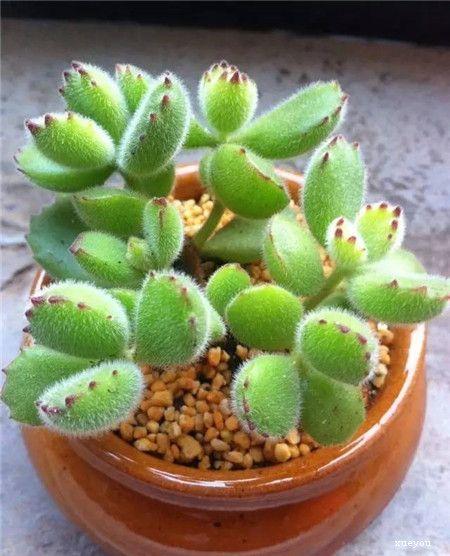
2猫爪

3达摩兔耳
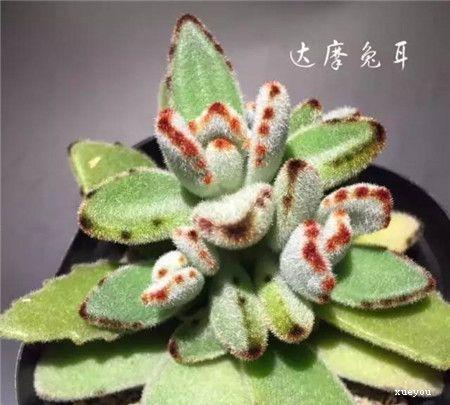
4小红嘴
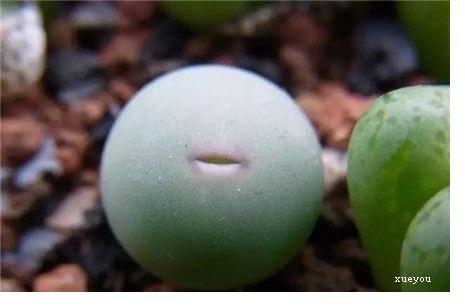
5信东尼
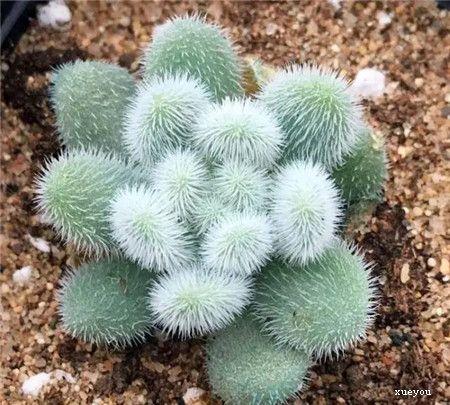
6锦司晃
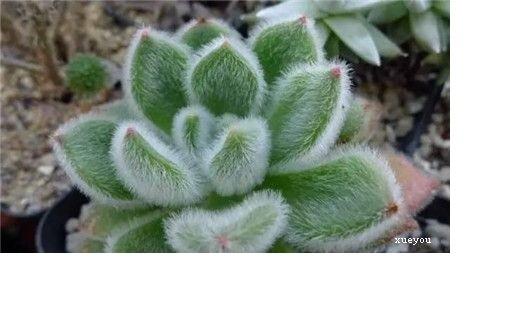
7白闪冠

8断崖女王

9梦椿
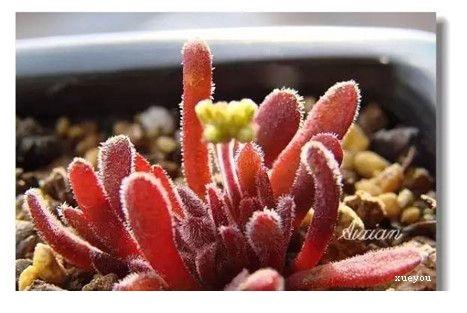
10绒针

晶莹剔透独的多肉
1姬玉露
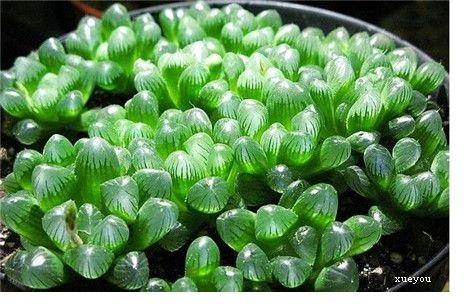
2白斑玉露
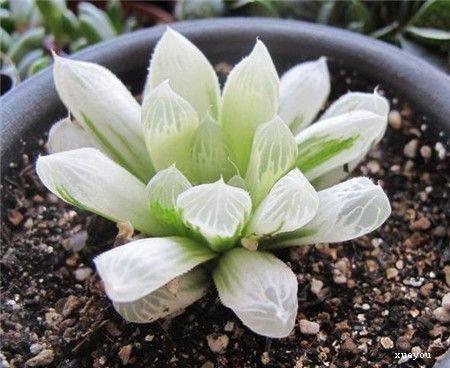
3玉露锦
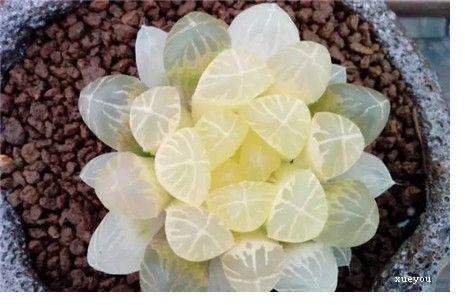
4圆头玉露
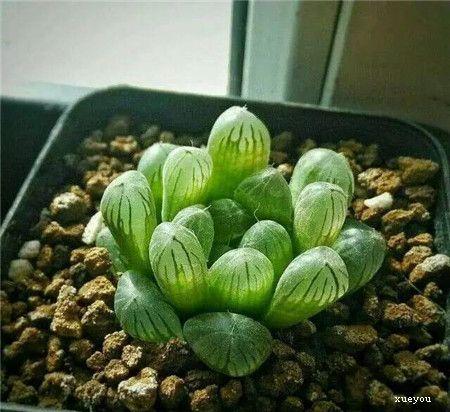
5樱水晶

6蝉翼玉露
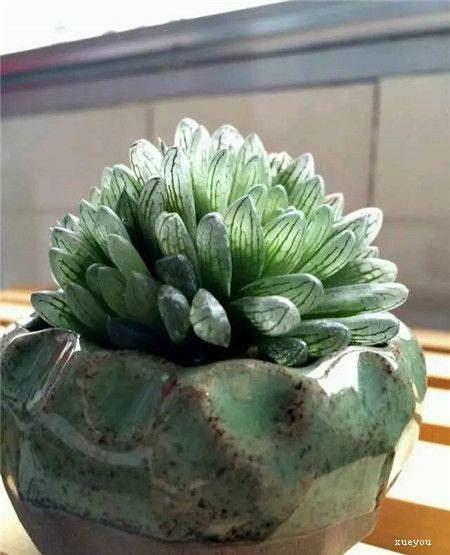
7西瓜寿
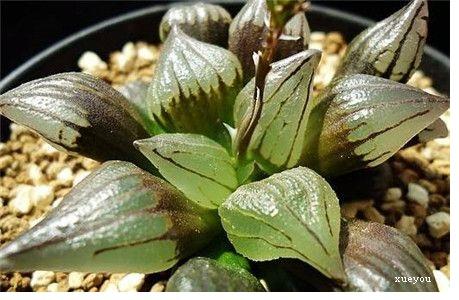
8灯泡
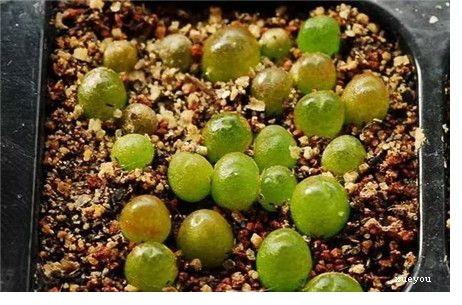
9康平寿锦

10无纹万象—天照

像果肉一样的多肉
1红粉台阁
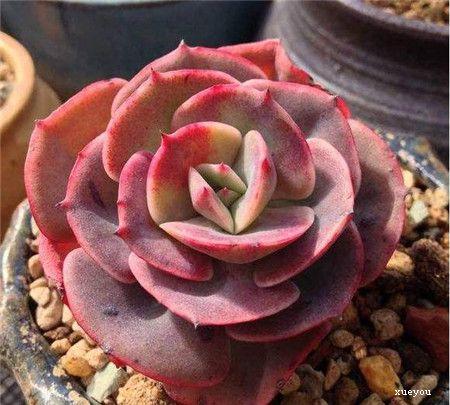
2雨燕座
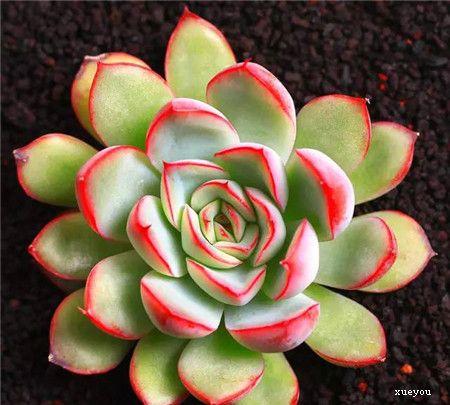
3红宝石
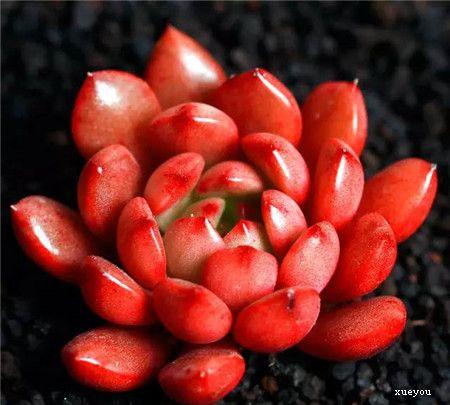
4白夜香槟
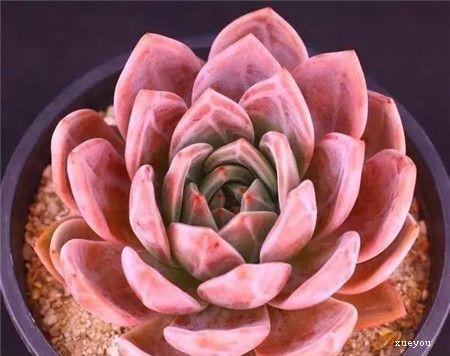
5赤豆白石
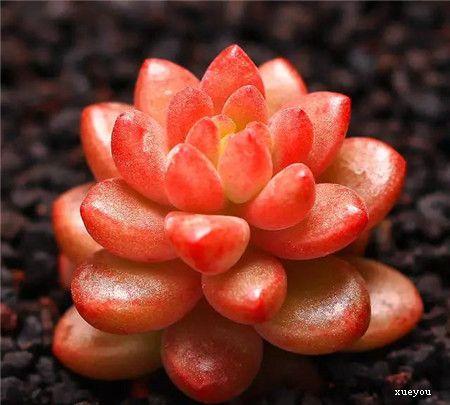
6虹之玉
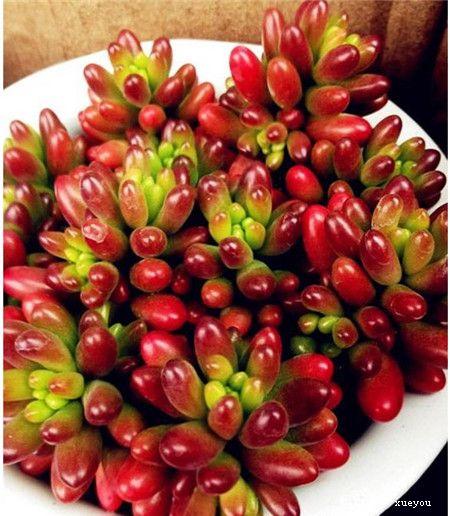
7绿豆
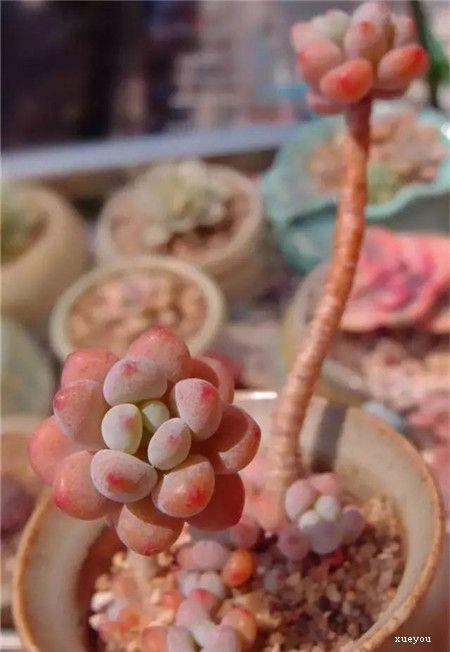
8水蜜桃
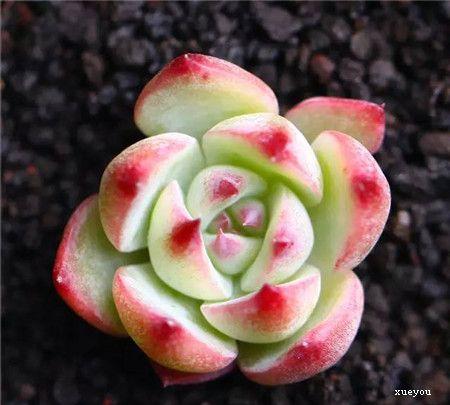
9橙梦露
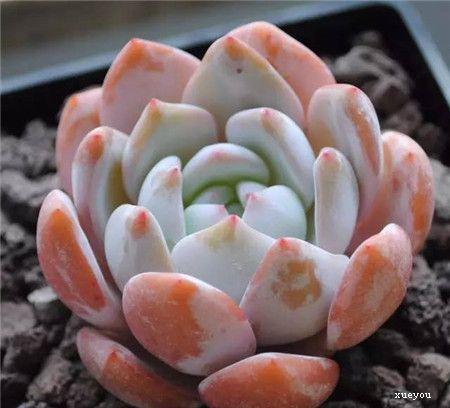
10黛比
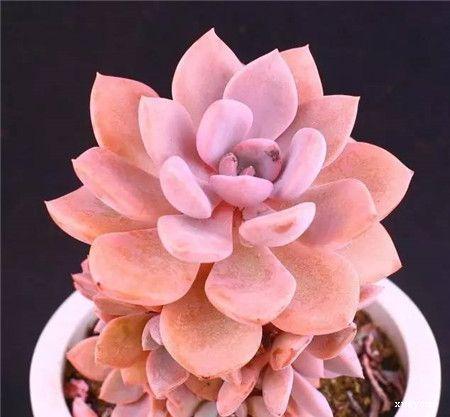
最呆萌的多肉
1熊童子

2猫爪

3达摩兔耳

4小红嘴

5信东尼

6锦司晃

7白闪冠

8断崖女王

9梦椿

10绒针

晶莹剔透独的多肉
1姬玉露

2白斑玉露

3玉露锦

4圆头玉露

5樱水晶

6蝉翼玉露

7西瓜寿

8灯泡

9康平寿锦

10无纹万象—天照

像果肉一样的多肉
1红粉台阁

2雨燕座

3红宝石

4白夜香槟

5赤豆白石

6虹之玉

7绿豆

8水蜜桃

9橙梦露

10黛比

2
2
文章
Miss Chen
2017年07月11日

#五十铃玉 ,又名橙黄棒叶花,属多浆植物。它的植株非常肉质,常密生成丛。花期8-9月,花梗长4-5厘米,花朵金黄色。对于五十铃玉的养殖,每个花友都有各自的问题。今天我们就来讨论一下五十铃玉开花怎么办?五十铃玉开花后会死吗?我们一起往下阅读!

五十铃于开花会死吗
五十铃玉开花后不会死,花友可以放心,大可放心赏花。
五十铃玉开花怎么办
五十铃玉开花的作用无非有两个一个是欣赏,一个是结种子,相信有不少花友都想试试给五十铃玉授粉希望能结种子,这里要告诉花友的是,五十铃玉是异花授粉,必须要两株五十铃玉同时开花才行,要是就一株还是安心赏花吧。
下面我们来欣赏一下五十铃玉开花的样子:

五十铃玉开花

五十铃玉开花

五十铃玉开花

五十铃于开花会死吗
五十铃玉开花后不会死,花友可以放心,大可放心赏花。
五十铃玉开花怎么办
五十铃玉开花的作用无非有两个一个是欣赏,一个是结种子,相信有不少花友都想试试给五十铃玉授粉希望能结种子,这里要告诉花友的是,五十铃玉是异花授粉,必须要两株五十铃玉同时开花才行,要是就一株还是安心赏花吧。
下面我们来欣赏一下五十铃玉开花的样子:

五十铃玉开花

五十铃玉开花

五十铃玉开花
0
0
文章
玲儿
2017年07月09日

シャコバサボテンの育て方・栽培方法
育て方のポイント
栽培環境・日当たり・置き場
鉢植えで管理します。4月から10月までは屋外でしっかり日に当てて締まった株に育てますが、梅雨明けから9月上旬までは真夏の直射日光が当たらない半日陰で管理します。涼しくなって、さらに日も短くなる秋に花芽をつけるので、秋以降は夜遅くまで明るい場所に置くと、花芽がつきにくくなります。
晩秋の霜が降りる前に室内に取り込み、窓辺など日当たりのよい場所で管理します。蕾がついた株を移動させると落蕾、落花することがあるので、蕾の大きさが1cm以下のうちは、できるだけ移動させないようにしてください。冬は5℃以上を保ちますが、暖房の効きすぎも落花の原因になるので注意しましょう。
水やり
4月から9月までの生育期は、用土の表面が乾いたらたっぷり与え、10月から11月までの蕾が大きくなる時期は、用土の表面が乾いたら1~2日待ってから、たっぷり与えます。12月から3月までの厳寒期は乾かし気味に管理します。花後、5℃程度の寒い場所で冬越しさせる場合は、水をほとんど与えません。

肥料
生育を開始する春から梅雨までは肥料が必要です。4月から6月までは緩効性化成肥料(N-P-K=12-12-12など)を、3月から6月までは液体肥料(N-P-K=6-10-5など)を施してください。梅雨明け以降は肥料を施さず、花芽ができ始める9月上旬までには肥料が切れているようにしてください。
病気と害虫
害虫:ナメクジ、ケムシ、ヨトウムシ
ナメクジ、ケムシ、ヨトウムシが4月から10月に発生します。柔らかい新芽を好んで食害します。ナメクジやヨトウムシは夜行性なので、夜に見回って捕殺するか、薬剤で防除します。ケムシは近くに食害を受けた部位の近くにいることが多いので、見つけしだい捕殺するか、早めに薬剤で防除します。

用土(鉢植え)
水はけと通気性のよい用土が適しています。バーミキュライト、パーライト(または軽石)、酸度調整済みピートモスなどの等量配合土などに、リン酸分の多い緩効性化成肥料(N-P-K=6-40-6など)を規定量混ぜて植えつけます。
植えつけ、 植え替え
1~2年に1回、4月に、根鉢をくずして植え替えます。茎節が赤くなって茎節の継ぎ目から根が出ているような場合は、根腐れを起こしているかもしれません。鉢から抜いて根がほとんど腐っていたら、完全に用土を落として植え替えますが、そのまま枯死する可能性が高いので、しおれていない茎節を使ってさし芽を行い、新しい株を用意しておきましょう。

ふやし方
さし芽:適期は4月から7月です。木質化していない茎節を2~3節に切り取り、3.5号程度の鉢に10~12本さします。さし芽用土は、植えつけ用土と同じ、バーミキュライト、パーライト(または軽石)、酸度調整済みピートモスなどの等量配合土などです。さし芽後もそのまま育てるので、同心円を描くようにさすと自然に丸くまとまった姿になります。

主な作業
切り戻し:春に、各枝の茎節を2節程度ひねり取ります。分枝が促され、同時に背丈を小さくする効果があります。
芽摘み:秋になっても茎葉が成長し続けている場合は、先端の赤く柔らかい新芽を摘み取ると、花芽がつきやすくなります。
育て方のポイント
栽培環境・日当たり・置き場
鉢植えで管理します。4月から10月までは屋外でしっかり日に当てて締まった株に育てますが、梅雨明けから9月上旬までは真夏の直射日光が当たらない半日陰で管理します。涼しくなって、さらに日も短くなる秋に花芽をつけるので、秋以降は夜遅くまで明るい場所に置くと、花芽がつきにくくなります。
晩秋の霜が降りる前に室内に取り込み、窓辺など日当たりのよい場所で管理します。蕾がついた株を移動させると落蕾、落花することがあるので、蕾の大きさが1cm以下のうちは、できるだけ移動させないようにしてください。冬は5℃以上を保ちますが、暖房の効きすぎも落花の原因になるので注意しましょう。
水やり
4月から9月までの生育期は、用土の表面が乾いたらたっぷり与え、10月から11月までの蕾が大きくなる時期は、用土の表面が乾いたら1~2日待ってから、たっぷり与えます。12月から3月までの厳寒期は乾かし気味に管理します。花後、5℃程度の寒い場所で冬越しさせる場合は、水をほとんど与えません。

肥料
生育を開始する春から梅雨までは肥料が必要です。4月から6月までは緩効性化成肥料(N-P-K=12-12-12など)を、3月から6月までは液体肥料(N-P-K=6-10-5など)を施してください。梅雨明け以降は肥料を施さず、花芽ができ始める9月上旬までには肥料が切れているようにしてください。
病気と害虫
害虫:ナメクジ、ケムシ、ヨトウムシ
ナメクジ、ケムシ、ヨトウムシが4月から10月に発生します。柔らかい新芽を好んで食害します。ナメクジやヨトウムシは夜行性なので、夜に見回って捕殺するか、薬剤で防除します。ケムシは近くに食害を受けた部位の近くにいることが多いので、見つけしだい捕殺するか、早めに薬剤で防除します。

用土(鉢植え)
水はけと通気性のよい用土が適しています。バーミキュライト、パーライト(または軽石)、酸度調整済みピートモスなどの等量配合土などに、リン酸分の多い緩効性化成肥料(N-P-K=6-40-6など)を規定量混ぜて植えつけます。
植えつけ、 植え替え
1~2年に1回、4月に、根鉢をくずして植え替えます。茎節が赤くなって茎節の継ぎ目から根が出ているような場合は、根腐れを起こしているかもしれません。鉢から抜いて根がほとんど腐っていたら、完全に用土を落として植え替えますが、そのまま枯死する可能性が高いので、しおれていない茎節を使ってさし芽を行い、新しい株を用意しておきましょう。

ふやし方
さし芽:適期は4月から7月です。木質化していない茎節を2~3節に切り取り、3.5号程度の鉢に10~12本さします。さし芽用土は、植えつけ用土と同じ、バーミキュライト、パーライト(または軽石)、酸度調整済みピートモスなどの等量配合土などです。さし芽後もそのまま育てるので、同心円を描くようにさすと自然に丸くまとまった姿になります。

主な作業
切り戻し:春に、各枝の茎節を2節程度ひねり取ります。分枝が促され、同時に背丈を小さくする効果があります。
芽摘み:秋になっても茎葉が成長し続けている場合は、先端の赤く柔らかい新芽を摘み取ると、花芽がつきやすくなります。
0
0
文章
Colour_
2017年07月06日

白花石蒜是多年生草本植物,鳞茎近球形,外有紫褐色薄膜,长4-5cm,直径2.5-4cm,上端有长约3cm的叶基,基部生多数白色须根;表面由2-3层黑棕色 干枯膜质鳞片包被,内部有10多层白色富粘性的肉质鳞片,生于短缩的鳞茎盘上,中心有黄白色的芽。气特异,味极苦。秋季出叶,叶狭带状,长约15厘米,宽约0.5厘米,顶端钝,深绿色,中间有粉绿色带。夏秋之交,花茎破土而出,伞形花序顶生,花茎高约30厘米;总苞片2枚,披针形,长约3.5厘米,宽约0.5厘米;有花4-7朵。
与原变种(红花石蒜)唯一差别是花白色;花被裂片狭倒披针形,长约3厘米,宽约0.5厘米,强度皱缩和反卷,花被筒绿色,长约0.5厘米;雄蕊显著伸出于花被外,比花被长1倍左右。花期8-9月,果期10月。
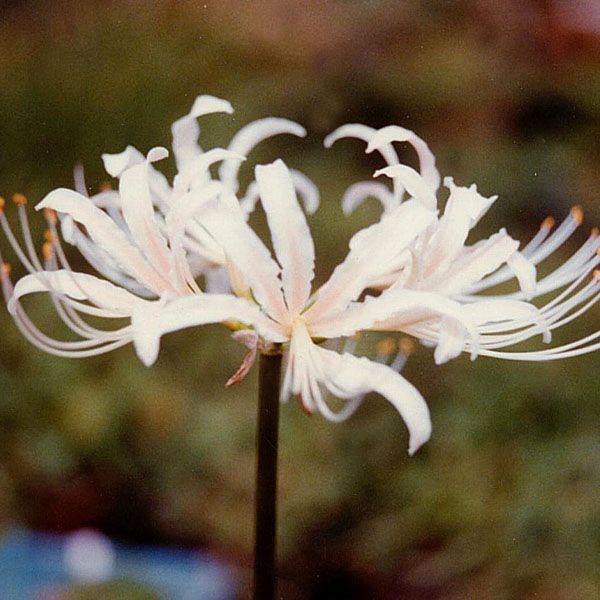
生态环境
耐寒性强,喜半阴,也耐暴晒,喜湿润,也耐干旱。各类土壤均能生长,以疏松、肥沃的腐殖质土最好。有夏季休眠习性。冬季叶丛青翠,生机勃勃。野生品种生长于阴森潮湿地,其着生地为红壤,因此耐寒性强,喜阴,能忍受的高温极限为日平均温度24℃;喜湿润,也耐干旱,习惯于偏酸性土壤,以疏松、肥沃的腐殖质土最好。有夏季休眠习性。
分布范围
分布于日本,中国山东、河南、安徽、江苏、浙江、江西、福建、湖北、湖南、广东、广西、陕西、四川、贵州、云南。野生于阴湿山坡和溪沟边的石缝处;庭园也栽培。
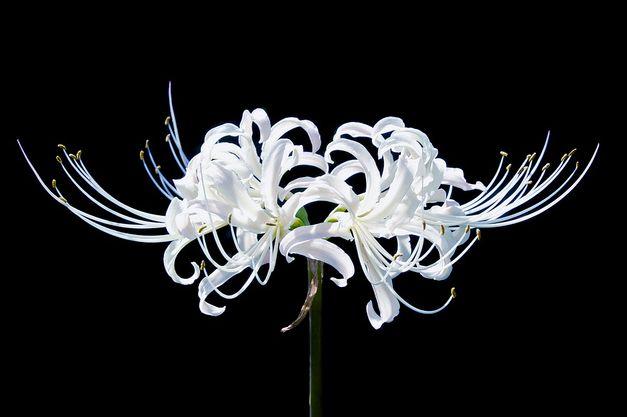
栽培技术
温度
石蒜科的许多成员都喜爱温暖的气候,所以孤挺花、文殊兰、蜘蛛百合、紫娇花、葱兰、韭兰和火球花皆属此类,适合平地栽培。金花石蒜和君子兰的生育适温在摄氏十五到二十五度之间,较适合在北部栽种,君子兰夏季应避免过於湿热的环境。水仙类性喜冷凉,平地只能在冬春之际种植;垂筒花和袋鼠脚应种在中、高海拔较适合。
日照
石蒜科球根花卉多数喜爱在阳光充足的环境下生长,全日照或半日照的环境下皆很适合,光线不足会造成开花不良。养在水中的中国水仙每日仍须二、三小时以上的日照,否则会徒长倒伏。君子兰喜爱荫凉的环境,应避免夏季时阳光直射,日照在50%至70%之间较佳。
土壤
石蒜一般说来球根花卉对於土壤并不挑剔,许多球根花卉的原生地土壤十分乾硬,却依然花开灿烂,不过若能提供富含有机质的壤土或砂质壤土,当能使它长得更美丽。除了文殊兰和蜘蛛百合等嗜水的种类,一般栽种的土壤排水性要力求良好,否则球根容易腐烂。肥料球根花卉的生长季长,种植前应埋入充分的有机肥,之后每两个月施用追肥一次,可用自制的腐熟堆肥或三要素肥料,应偏重磷钾肥的比例,以促进球根发育和开花。
水分
石蒜球根花卉膨大的地下茎使它们较能忍受水分的缺乏,不过在排水优良的土地里,供应充足的水分才能使它们充分生长,当表土乾燥呈灰白色时,就应该给它们补充水分了。金花石蒜和火球花在叶子逐渐枯萎时,应慢慢减少浇水,一旦进入休眠期,即不可再浇水或施肥。 栽培时间上海地区适宜的栽培时间是5~11月份,可以同花期控制相结合,切忌在长叶以后的冬季或早春移栽。寒冷地区应在春天栽种。多数品种喜温暖的气候,最高气温不超过30℃,旬平均气温24℃,适宜石蒜生长。冬季日平均气温8℃以上,最低气温1℃,不影响石蒜生长。 栽培环境种植深度不宜太深,以鳞茎顶刚埋入土面为好。要求排水良好的偏酸性沙质土或疏松的培养土,栽植时施适量的基肥,栽培后灌透水。营养生长期要经常灌水,保持土壤湿润,但不能积水,以防鳞茎腐烂。开花前20天至开花期必须要供给适量水分,以达到开花整齐一致,且延长花期。
与原变种(红花石蒜)唯一差别是花白色;花被裂片狭倒披针形,长约3厘米,宽约0.5厘米,强度皱缩和反卷,花被筒绿色,长约0.5厘米;雄蕊显著伸出于花被外,比花被长1倍左右。花期8-9月,果期10月。

生态环境
耐寒性强,喜半阴,也耐暴晒,喜湿润,也耐干旱。各类土壤均能生长,以疏松、肥沃的腐殖质土最好。有夏季休眠习性。冬季叶丛青翠,生机勃勃。野生品种生长于阴森潮湿地,其着生地为红壤,因此耐寒性强,喜阴,能忍受的高温极限为日平均温度24℃;喜湿润,也耐干旱,习惯于偏酸性土壤,以疏松、肥沃的腐殖质土最好。有夏季休眠习性。
分布范围
分布于日本,中国山东、河南、安徽、江苏、浙江、江西、福建、湖北、湖南、广东、广西、陕西、四川、贵州、云南。野生于阴湿山坡和溪沟边的石缝处;庭园也栽培。

栽培技术
温度
石蒜科的许多成员都喜爱温暖的气候,所以孤挺花、文殊兰、蜘蛛百合、紫娇花、葱兰、韭兰和火球花皆属此类,适合平地栽培。金花石蒜和君子兰的生育适温在摄氏十五到二十五度之间,较适合在北部栽种,君子兰夏季应避免过於湿热的环境。水仙类性喜冷凉,平地只能在冬春之际种植;垂筒花和袋鼠脚应种在中、高海拔较适合。
日照
石蒜科球根花卉多数喜爱在阳光充足的环境下生长,全日照或半日照的环境下皆很适合,光线不足会造成开花不良。养在水中的中国水仙每日仍须二、三小时以上的日照,否则会徒长倒伏。君子兰喜爱荫凉的环境,应避免夏季时阳光直射,日照在50%至70%之间较佳。
土壤
石蒜一般说来球根花卉对於土壤并不挑剔,许多球根花卉的原生地土壤十分乾硬,却依然花开灿烂,不过若能提供富含有机质的壤土或砂质壤土,当能使它长得更美丽。除了文殊兰和蜘蛛百合等嗜水的种类,一般栽种的土壤排水性要力求良好,否则球根容易腐烂。肥料球根花卉的生长季长,种植前应埋入充分的有机肥,之后每两个月施用追肥一次,可用自制的腐熟堆肥或三要素肥料,应偏重磷钾肥的比例,以促进球根发育和开花。
水分
石蒜球根花卉膨大的地下茎使它们较能忍受水分的缺乏,不过在排水优良的土地里,供应充足的水分才能使它们充分生长,当表土乾燥呈灰白色时,就应该给它们补充水分了。金花石蒜和火球花在叶子逐渐枯萎时,应慢慢减少浇水,一旦进入休眠期,即不可再浇水或施肥。 栽培时间上海地区适宜的栽培时间是5~11月份,可以同花期控制相结合,切忌在长叶以后的冬季或早春移栽。寒冷地区应在春天栽种。多数品种喜温暖的气候,最高气温不超过30℃,旬平均气温24℃,适宜石蒜生长。冬季日平均气温8℃以上,最低气温1℃,不影响石蒜生长。 栽培环境种植深度不宜太深,以鳞茎顶刚埋入土面为好。要求排水良好的偏酸性沙质土或疏松的培养土,栽植时施适量的基肥,栽培后灌透水。营养生长期要经常灌水,保持土壤湿润,但不能积水,以防鳞茎腐烂。开花前20天至开花期必须要供给适量水分,以达到开花整齐一致,且延长花期。
0
0
文章
Colour_
2017年07月06日

昙花的养殖方法和注意事项:喜温暖湿润和半阴环境
昙花享有"月下美人"之誉。当花渐渐展开后,过1~2小时又慢慢地枯萎了,整个过程仅4个小时左右。故有"昙花一现"之说。那么 昙花是如何养殖的呢?养殖中又有什么好的方法呢?养殖 昙花又需要注意哪些事项的呢?请您带着疑问和我一起往下阅读吧!

昙花的养殖方法(基本知识):
最佳繁殖时间:昙花扦插繁殖在3~5月。但扦插时间以5~6月最为适宜。
最佳生长土壤:土壤要求宜用富含腐殖质、排水性能好、疏松肥沃的微酸性沙质土。
生长湿度要求:喜湿润的土壤和较高的空气湿度,怕水涝。
最佳生长温度:春季和夏季生长适宜温度为白天21~24℃,夜间16~18℃。冬季要入温室,放在向阳处,要求光照充足,越冬温度以保持10~13℃为宜。
最佳生长光照: 昙花喜温暖湿润和半阴环境。不耐霜冻,忌强光暴晒。

养殖昙花的注意事项:
施撒肥料:
1、昙花生长期每月施1~2次追肥,追肥以腐熟的饼液肥、粪肥液并加硫酸亚铁效果好。也可用尿素、过磷酸钙的混合液浇灌。
2、6月第一次花谢后,每半个月左右施氮磷结合的肥料一次,同时这段时间内,盆土一般以偏干一些为好,雨后应立即排除积水。肥料应使用充分发酵腐熟的有机肥。
3、夏、秋季中的7月、8月、9月三个月,是一年中观花的关键时刻,尤其要注意养护,加强肥水管理。
浇水要点:
1、昙花在春季到秋季生长期要充分浇水,并经常喷水提高空气湿度,保持盆土温润,但不能用碱性水。
2、秋末、冬季、初春气温较低时,昙花处于半休眠状态,应严格控制浇水,使盆土处于偏干状态,干透后略微浇点水即可。
3、春季气温上升后,昙花开始恢复生长,可逐渐加大浇水量,保持土壤湿润。
4、生长旺盛时除浇水外,还应向植株周围洒水,以增加空气湿度,并加强通风。
5、昙花虽较耐旱,但经常干旱对其生长开花不利,平时浇水要以不干为度。也不要太湿,以防止烂根。
6、雨季要防雨淋和盆中积水,晴朗天气要经常向叶面积周围喷水,保证环境和空气中有一定的湿度。
7、花期要保持盆土湿润,过干或过湿都会引起落蕾现象。
修剪要领:
1、昙花花期后及时修剪,去掉老的枝条,并适当施1~2次氮肥。
2、注意修剪,疏掉变态茎顶端及上部的弱芽,保留中下部的壮芽。
盆土更换: 昙花幼株每年换盆一次,成形株一般2年至3年换盆一次。换盆在春季气温12℃以上时进行,亦可在9月份进行。换盆前应停止浇水,使盆土干后脱盆,脱盆时应轻拿轻放,避免碰到植株。脱盆后除去根外旧土,修剪去枯死根、断根,栽后放置半阴处,暂不浇水,2天后略浇水,保持盆土偏干。
繁殖要点: 昙花用片状枝扦插繁殖,在温室内一年四季均可扦插。插穗宜选隔年稍老健壮的片状枝(过嫩易腐烂),截成10cm至15cm一段,晾2天~3天,待切口干结后,扦插基质或沙中,插入深度为插条的1/3左右(不宜太深),如土壤湿润则暂不浇水,以后控制土壤处于微润偏干状态。20天左右即开始发根,当根长至4cm~5cm时可上盆栽种,管理得当,2年生苗亦能开花。
病虫防治: 昙花病虫害比较少。常见的病虫害有龟蜡蚧。可以喷施专杀药剂,如杀扑磷、毒死蜱、蚧必死等。也可喷施洗衣粉500倍液左右喷施,然后于12小时后用清水冲洗干净,以免影响昙花呼吸,最好用软抹布擦拭干净,杀灭效果更好。
昙花享有"月下美人"之誉。当花渐渐展开后,过1~2小时又慢慢地枯萎了,整个过程仅4个小时左右。故有"昙花一现"之说。那么 昙花是如何养殖的呢?养殖中又有什么好的方法呢?养殖 昙花又需要注意哪些事项的呢?请您带着疑问和我一起往下阅读吧!

昙花的养殖方法(基本知识):
最佳繁殖时间:昙花扦插繁殖在3~5月。但扦插时间以5~6月最为适宜。
最佳生长土壤:土壤要求宜用富含腐殖质、排水性能好、疏松肥沃的微酸性沙质土。
生长湿度要求:喜湿润的土壤和较高的空气湿度,怕水涝。
最佳生长温度:春季和夏季生长适宜温度为白天21~24℃,夜间16~18℃。冬季要入温室,放在向阳处,要求光照充足,越冬温度以保持10~13℃为宜。
最佳生长光照: 昙花喜温暖湿润和半阴环境。不耐霜冻,忌强光暴晒。

养殖昙花的注意事项:
施撒肥料:
1、昙花生长期每月施1~2次追肥,追肥以腐熟的饼液肥、粪肥液并加硫酸亚铁效果好。也可用尿素、过磷酸钙的混合液浇灌。
2、6月第一次花谢后,每半个月左右施氮磷结合的肥料一次,同时这段时间内,盆土一般以偏干一些为好,雨后应立即排除积水。肥料应使用充分发酵腐熟的有机肥。
3、夏、秋季中的7月、8月、9月三个月,是一年中观花的关键时刻,尤其要注意养护,加强肥水管理。
浇水要点:
1、昙花在春季到秋季生长期要充分浇水,并经常喷水提高空气湿度,保持盆土温润,但不能用碱性水。
2、秋末、冬季、初春气温较低时,昙花处于半休眠状态,应严格控制浇水,使盆土处于偏干状态,干透后略微浇点水即可。
3、春季气温上升后,昙花开始恢复生长,可逐渐加大浇水量,保持土壤湿润。
4、生长旺盛时除浇水外,还应向植株周围洒水,以增加空气湿度,并加强通风。
5、昙花虽较耐旱,但经常干旱对其生长开花不利,平时浇水要以不干为度。也不要太湿,以防止烂根。
6、雨季要防雨淋和盆中积水,晴朗天气要经常向叶面积周围喷水,保证环境和空气中有一定的湿度。
7、花期要保持盆土湿润,过干或过湿都会引起落蕾现象。
修剪要领:
1、昙花花期后及时修剪,去掉老的枝条,并适当施1~2次氮肥。
2、注意修剪,疏掉变态茎顶端及上部的弱芽,保留中下部的壮芽。
盆土更换: 昙花幼株每年换盆一次,成形株一般2年至3年换盆一次。换盆在春季气温12℃以上时进行,亦可在9月份进行。换盆前应停止浇水,使盆土干后脱盆,脱盆时应轻拿轻放,避免碰到植株。脱盆后除去根外旧土,修剪去枯死根、断根,栽后放置半阴处,暂不浇水,2天后略浇水,保持盆土偏干。
繁殖要点: 昙花用片状枝扦插繁殖,在温室内一年四季均可扦插。插穗宜选隔年稍老健壮的片状枝(过嫩易腐烂),截成10cm至15cm一段,晾2天~3天,待切口干结后,扦插基质或沙中,插入深度为插条的1/3左右(不宜太深),如土壤湿润则暂不浇水,以后控制土壤处于微润偏干状态。20天左右即开始发根,当根长至4cm~5cm时可上盆栽种,管理得当,2年生苗亦能开花。
病虫防治: 昙花病虫害比较少。常见的病虫害有龟蜡蚧。可以喷施专杀药剂,如杀扑磷、毒死蜱、蚧必死等。也可喷施洗衣粉500倍液左右喷施,然后于12小时后用清水冲洗干净,以免影响昙花呼吸,最好用软抹布擦拭干净,杀灭效果更好。
0
0



